Lysmata amboinensis larva
http://www.reefcentral.com/forums/showthread.php?t=846955
原作者:Luis A M
主要圖片及資料來源...
清潔蝦資料收集整理...
白背清潔蝦(Lysmata amboinensis )是最難以繁殖的觀賞蝦之一,僅次於美人蝦(Stenopus hispidus).主要問題在於非常長的浮游期,幼苗(Zoea期)在到達將要變態沉底的最後階段前極易死亡。
Zoea 1
剛孵出的幼苗,zoea1。眼睛無柄,尾扇僅有1片,1對步足及2對泳足。2.8m


蝦類幼苗附肢發展相當複雜。真正的腿被稱為胸足(Pereiopods:pp),成熟蝦子用來進食的顎足(Maxillipedia:Mp),第三對顎足(mp3)是白色,用來幫魚隻清理寄生蟲的顎足。腹足(Pleopods:pl)又稱泳足。幼苗期,每一對附肢(除了pp5外)會分為兩個分支,稱 為外肢("游泳足") 與內肢("步足")。新生的幼苗(zoea1)還沒有胸足(pp),是藉由mp2與mp3游泳。當發育時,真實的腿,胸足(pp),一次出現一對,而最後 是腹足(pleopods)。當他們完全發育後,Zoea最後一期完成,幼苗準備著苗。
所以 "泳足"是mp2,mp3,pp1,pp2,pp3 and pp4的外肢。
而"步足"是mp3,pp1,pp2,pp3,pp4 and pp5.的內肢。
Zoea 2
4天大小,Size:3.27 mm。短眼柄的眼睛
Zoea 3
孵化後7天,3.5mm長。尾扇由五片所組成,中央尾節,兩片透明纖細的魚尾型內尾扇及兩片大型,有紅斑的外尾扇。
現在有兩對步行的足(mp3 and pp1)三對泳足(mp2,mp3 and pp1)。
zoea 4

孵化後12天,4mm。Lysmata 屬的幼苗,其典型的pp5在這時期長出。它們是非常長、曲型且朝前的足。末端寬且有色如槳一般。在幼苗前端可見,像兩隻紅色的矛。
接著是第一觸角,(A1),開始分岔,為成體的第一對觸角。之後,兩對有顏色的步行足(mp3 and pp1)及三對的透明泳足(mp2,mp3 and pp1)可見。
Zoea 5
孵化後14天,4.2mm。pp2出現,現在有四對的步足(mp3,pp1,pp2 and pp5)。四對的泳足(mp2,mp3,pp1 and pp2)。A1分支為總長的1/3。而尾節呈現方型,長度與內肢類似。
Zoea 6
Z6孵化後18天,4.4mm。pp3在這期出現。現在有五對步足:mp3,pp1,pp2,pp3與pp5。五對泳足:mp2,mp3,pp1,pp2與pp3。尾節稍微呈卵圓型,比尾足(uropods)較短。
A1分支約為全長的1/2。
Zoea 7
zoea 7 孵化後24天。
六對步足:mp3,pp1,pp2,pp3,pp4 and pp5.
六對泳足:mp2,mp3,pp1,pp2,pp3 and pp4.
幼苗足肢已完全長成,
Zoea 7. 觸角的發芽
以上照片顯示出觸角的發展(第二觸角的鞭毛),可作為新齡期的辨認方式。
Zoea 8
zoea8,the antenna reaches the first setae(hairs) of the scale.
Zoea 9
In the 9th zoea,the antenna is almost half the length of the scale.
This is a lateral view.You can see the scale under the eyes.The antenna can be seen below the scale.
Zoea 10
This is the 10th zoea,in a lateral view.Antenna,now with a whitish tip,reaches close to the bifurcation of A1,the antennula,or almost the total length of the scale.
Closer view:
Interestingly,in some larvae,I could see a very incipient bud of pleopods,but only in 3th and 4th pairs,heralding the bud development of next stage:
The 11 larvae moved to a clean tank are still fine.
Interestingly,all the three proposed mechanisms explaining the very long larval life of this shrimp seem to be working here.Between the 7th zoea (Z7) where all the legs develop and the stage where pleopods (swimmerettes)show, I found some new stages.
While many of the larval structures show slight though definite changes,the feature one must look to follow these stages is the development of the antenna called flagellum of A2,and it´s relation with the basal plate,called the scale.
So following are the observed stages:
Z7-day 18.Flagellum is a short blunt bud.
Z8-day 26.Flagellum is longer and slender with two apical setae (hairs in the tip).Reaches the point in the scale where setae start,about 1/4 the length of the scale.
Z9-day 33.Flagellum almost reaches half of the scale.
Z10-day 36.Flagellum reaches the fork of A1,the antennula,or almost the total length of the scale.Pleopod buds show but only of the 3rd and 4th pairs.
Of course I must repeat these observations many times and document them with pictures.And find and describe new stages.This is not a formal academic description,of course.Just a practical,hobbyist oriented staging key to monitor the long larval development of this shrimp.As long as they help me by staying alive,that is!
Z11-day 37.Flagellum is now longer than scale.All five pairs of pleopod buds are now present.3º and 4º pairs are more developed than the others.
This level of development is reached by the 8th zoea in peppermint shrimps. See how this species has more stages,possibly related with the extra long larval phase.
Zoea 11
The 11th zoea shows the pleopod buds:
The antenna is now longer than the scale and the fork of the antennule:
ZOEA 12
ZOEA 13
Additional pics of pleopods of the 13th zoea.Usually both branches,exopods and endopods overlap in the side view.But in these snapshots I could capture them spreaded.Pleopods are now motile.Larger branch is the exopod,smaller the endopod.

Zoea 14
This is the 14th zoea at 76 days.Pleopods are functional and covered by setae all around,about 40 setae in the exop.The endop.now has an AI.
Again in this pic,the two branches can be seen.The smaller is the endop.and the little spur in it´s left border,the AI.
This is the last larval stage,so this species has 14 zoeal stages.In any other species,the larva should be ready to settle at this point.
But L.amboinensis is now only in the middle of it´s larval life,and about half the size it must reach before settling.
I lost one of the larvae, but accidentally.It got trapped in the tank´s pipework.So six remain.
This is how the 107 days zoea looks.Notice the well developed pleopods (swimmerettes),the forward pointing A2 (antenna)with very narrow bands,and the upside pointing and forked A1 (antennula),with wide bands.
More pics showing the AI (arrows)
Interst finding
that I want to share with you.Through this thread you heard about pleopods,appendix interna (AI)and appendix masculina (AM).
Well,now it´s time to further explain what they are and how they work in the post larval-adult stages of the shrimp.
Pleopods are the swimmerettes,the fins under the pleon (abdomen,tail) that shrimps use for swimming and where eggs are attached.There are five pairs,and each one is split in two fins,the outer is the exopod and the inner the endopod.
AI is a finger like process of the endopods with a Velcro like structure at the tip.With it,both AI,right and left can stick together allowing the four fins of each pleopod pair to paddle together as a single piece.The pics below show how that works.If it is not easy to see,I will put names and arrows with Photoshop,let me know.
and for a closer look:
This is a close up of the pleops,showing the appendix interna.I had more pics,but my disk capacity was over. I asked for some more space...
I asked for some more space...
90 days
Well,my lonely larva is still hanging on,and reached 90 days!
My previous record was 99.
Pleopods look fully developed.If it was a peppermint,I would say it was last stage,close to settling.
But amboinensis should grow up to 20 mm and 120 days so I expect new stages and/or marking time.This is a view of the pleopods:
Each pleopod has two branches:exopodite and endopodite.See a close look:
Endop.are well developed,with setae (hairs)all around.But exop.are less developed,shorter (about 60%) and especially narrower.
Will see what comes next,provided this larva survives!
124 days
This is the last picture of the larva.
And this is the PL,2 days after meta.,when the white colour appeared.Isn't it nice?
Success at 143 days!
Gosh!I am now a member of the very exclusive (less than 10 members)club of L.amboinensis breeders!My giant larva settled today into a huge post-larva (PL).
The PL is so big that after next molt,when it becomes a juvenile,it will be a commercial size shrimp.So a six month growing time from hatch to sale,is not really that bad,it is about the same time clowns need.
The shrimp is gorgeous (to my eyes at least ).Colour marks are very different to those of the adults.It swings sideways like peppermint shrimps.
).Colour marks are very different to those of the adults.It swings sideways like peppermint shrimps.
Fulfillment feels great! If this was an Oscar and I had to produce a boring thanking speech,I would have to mention many people,many of this Forum, who helped with advises and copies of scientific articles.But I have to give special thanks to Andy R.(Spawner)for his continuous assistance and substantial practical support.
If this was an Oscar and I had to produce a boring thanking speech,I would have to mention many people,many of this Forum, who helped with advises and copies of scientific articles.But I have to give special thanks to Andy R.(Spawner)for his continuous assistance and substantial practical support.
Next step is to raise lots of them and watch more carefully those last stages.




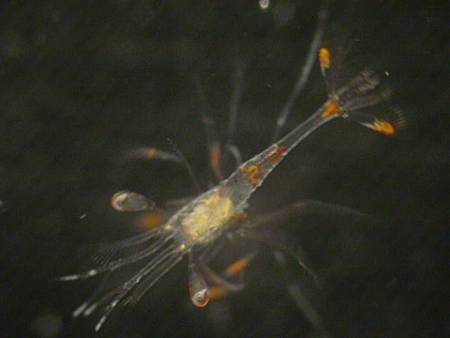













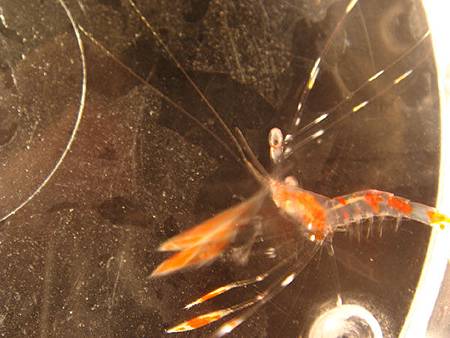
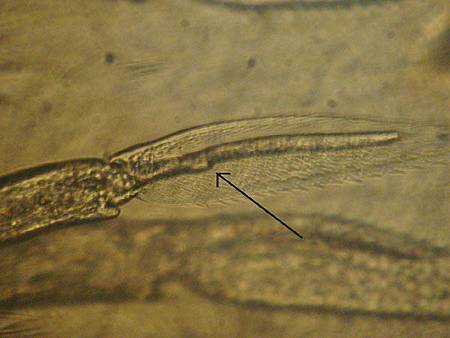
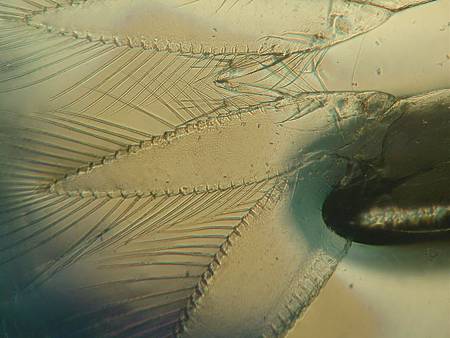





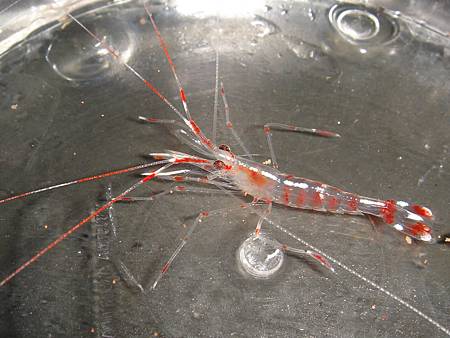


 留言列表
留言列表